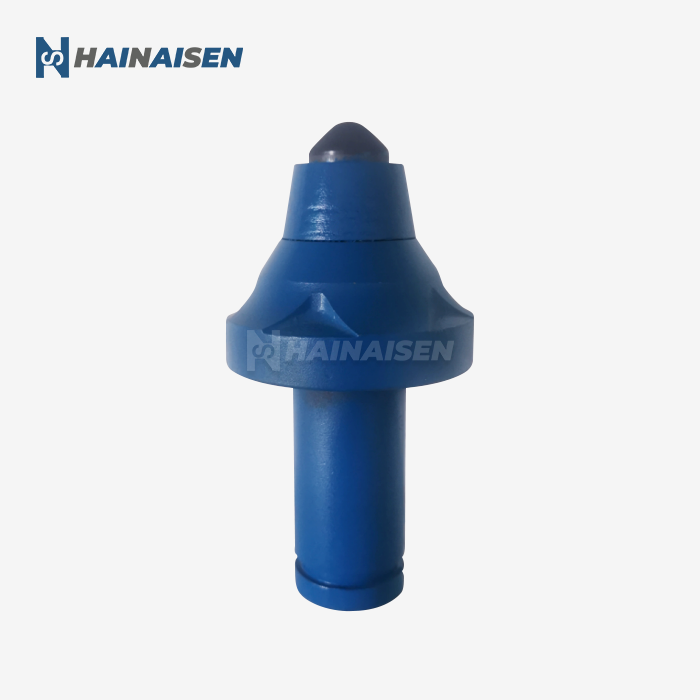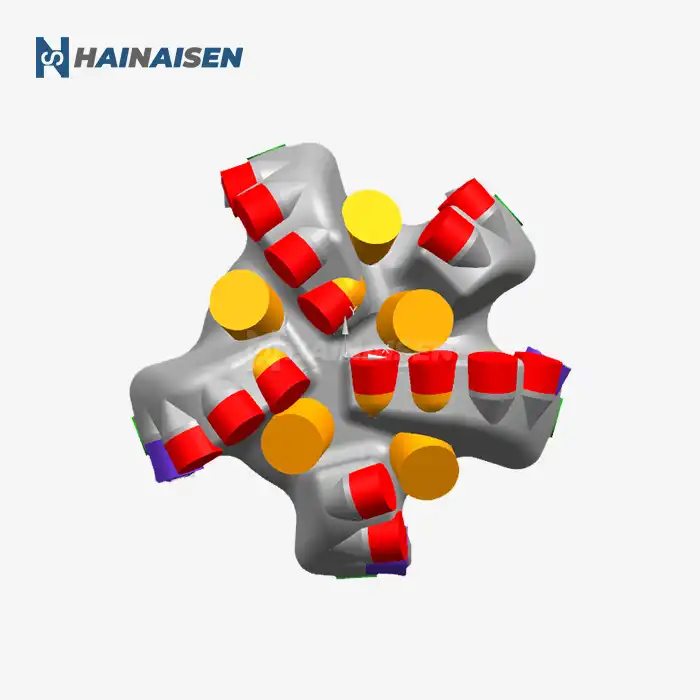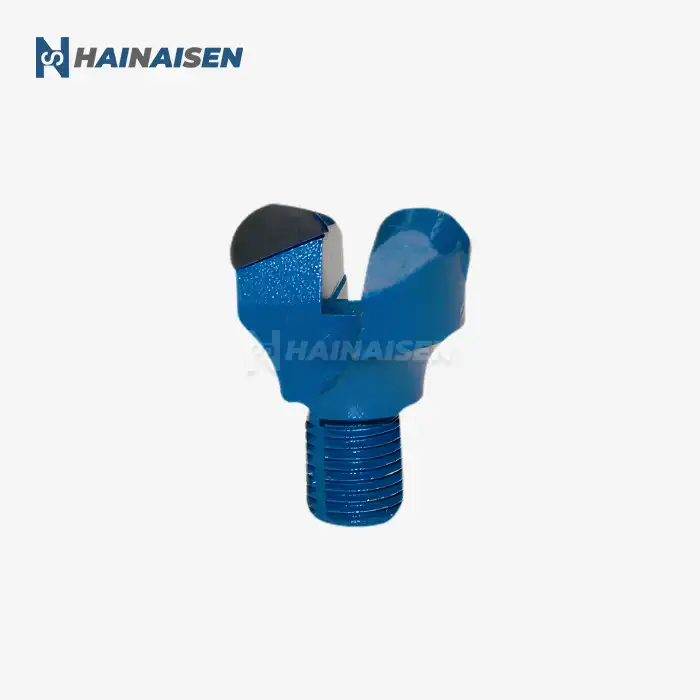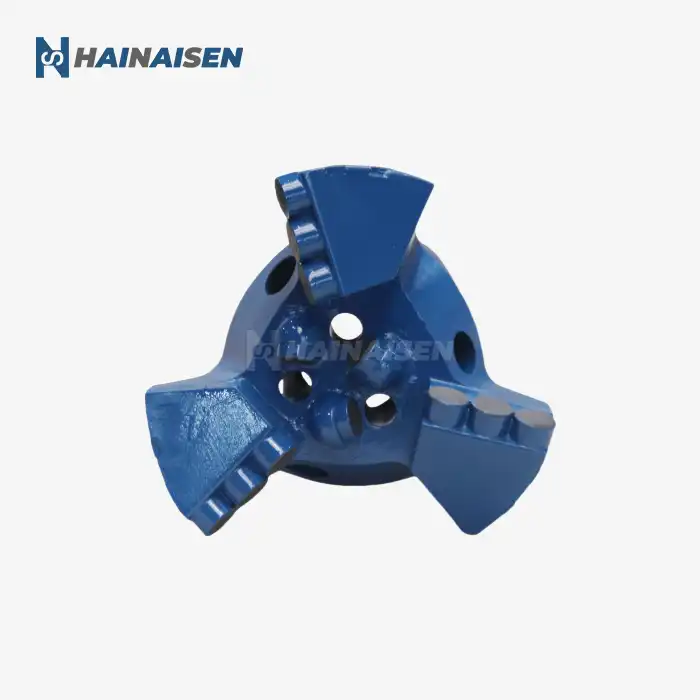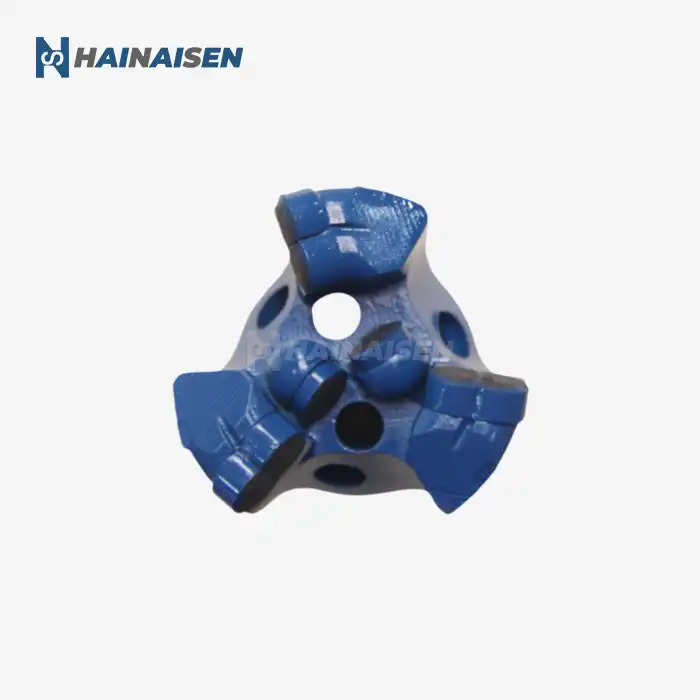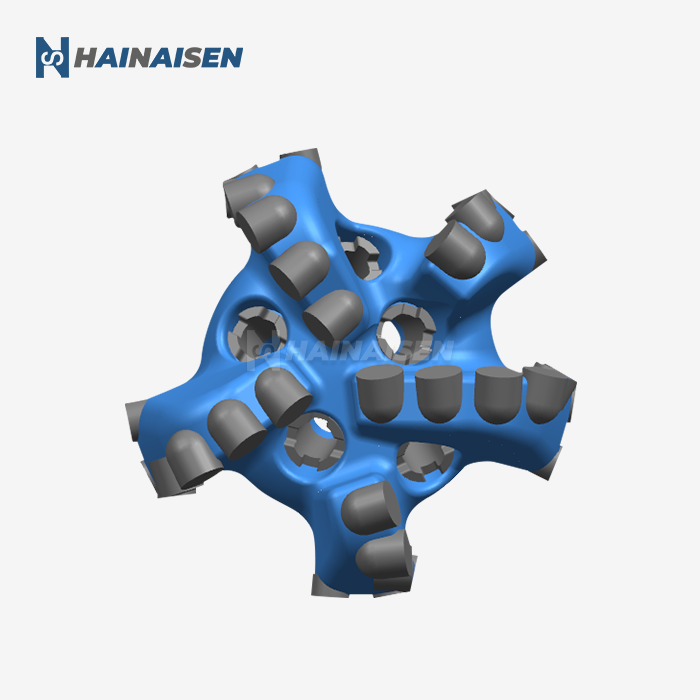Are steel-body PDC bits heat-resistant enough?
People who work in the drilling business are always looking for ways to improve the heat resistance of steel-body PDC bits. The need for bits that can handle high temperatures has grown as drilling operations go deeper into hotter rocks. These problems have been solved by modern steel-body PDC bits, which are very good at withstanding heat and can be used in heated drilling settings.
Thermal Stability Improvements
Recent advancements in metallurgy and manufacturing processes have significantly enhanced the thermal stability of steel-body PDC bits. These improvements include:
- Heat-treated steel alloys that maintain strength at elevated temperatures
- Innovative cooling channel designs that facilitate better heat dissipation
- Thermal-resistant coatings that protect the steel body from excessive heat exposure
In temperatures that would have been hard for older versions of drilling tools, these improvements make steel body PDC bits work well. It's possible for these bits to keep their structural integrity and cutting efficiency in high-heat circumstances, which has increased their usefulness in difficult drilling projects.
Performance in High-Temperature Wells
Field tests and real-world applications have demonstrated that modern steel-body PDC bits can perform admirably in high-temperature wells. Some key observations include:
- Consistent rate of penetration (ROP) even as temperatures increase
- Reduced instances of heat-related bit damage or failure
- Extended bit life in high-temperature formations compared to conventional bits
These performance indicators suggest that steel-body PDC bits, such as 3 Blades Steel Body PDC Bit, are indeed heat-resistant enough for many high-temperature drilling scenarios, providing operators with a reliable tool for challenging thermal environments.

Thermal tolerance of steel vs matrix PDC bits
When comparing the thermal tolerance of steel-body and matrix-body PDC bits, it's essential to understand the unique characteristics of each design. Both types of bits have their strengths and weaknesses when it comes to handling high-temperature drilling conditions.
Steel-Body PDC Bits: Thermal Advantages
Steel body PDC bits offer several thermal advantages:
- Superior heat conductivity, allowing for more efficient heat dissipation
- Greater thermal expansion coefficient, which can help maintain bit stability during temperature fluctuations
- Higher impact resistance, reducing the risk of thermal shock-induced damage
These properties make steel-body bits particularly well-suited for drilling operations that involve rapid temperature changes or cyclical heating and cooling.
Matrix-Body PDC Bits: Thermal Characteristics
Matrix-body PDC bits, on the other hand, have their own set of thermal properties:
- Higher overall temperature resistance due to the composite nature of the matrix material
- Lower thermal expansion, which can help maintain gauge protection in some high-temperature scenarios
- Potential for enhanced cutter retention in extreme heat due to the matrix material's properties
These characteristics make matrix-body bits a popular choice for certain high-temperature applications, particularly in abrasive formations where wear resistance is crucial.
Comparative Performance in High-Temperature Drilling
In practice, the choice between steel and matrix PDC bits, such as 3 Blades Steel Body PDC Bit, for high-temperature drilling often depends on specific well conditions and operational requirements. Some key considerations include:
- Formation characteristics: Steel-body bits may perform better in formations with varying hardness, while matrix bits might excel in consistently abrasive environments.
- Drilling parameters: Steel-body bits often allow for higher weight on bit (WOB) and rotary speed, which can be advantageous in certain high-temperature scenarios.
- Temperature profile: The expected temperature range and rate of change can influence the choice between steel and matrix bodies.
Ultimately, both steel and matrix PDC bits have demonstrated their ability to handle high-temperature drilling, with the optimal choice depending on the specific challenges of each drilling project.
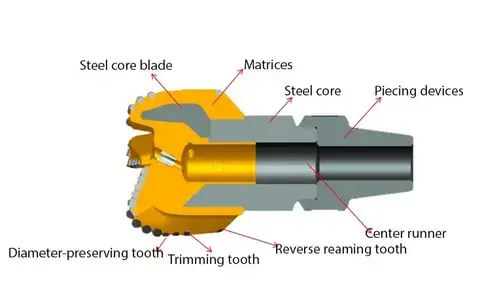
Materials enabling thermal performance in steel PDC bits
The thermal performance of steel PDC bits is largely attributed to the advanced materials used in their construction. These materials work together to create a bit that can withstand the rigors of high-temperature drilling while maintaining optimal cutting efficiency.
High-Performance Steel Alloys
The foundation of a thermally resilient steel body PDC bit lies in the carefully selected steel alloys used in its construction. These alloys typically feature:
- High chromium content for improved corrosion resistance at elevated temperatures
- Molybdenum additions to enhance strength and creep resistance in hot environments
- Carefully controlled carbon levels to optimize hardness without compromising ductility
These specialized alloys ensure that the steel body PDC bit maintains its structural integrity and performance even when subjected to extreme heat during drilling operations.
Advanced PDC Cutter Technology
The PDC cutters themselves play a crucial role in the bit's thermal performance. Modern PDC cutters designed for high-temperature applications feature:
- Thermally stable polycrystalline diamond tables that resist degradation at high temperatures
- Optimized diamond grain size and distribution for enhanced wear resistance in hot abrasive formations
- Specialized cobalt-leaching processes that improve the cutter's thermal stability
These advanced cutters enable steel body PDC bits to maintain their cutting efficiency even in the most challenging thermal environments.
Thermal-Resistant Coatings and Treatments
To further enhance the thermal performance of steel PDC bits, various coatings and surface treatments are employed:
- Thermal barrier coatings that reflect heat and protect the steel body from excessive thermal exposure
- Hard-facing materials applied to critical areas to prevent wear and maintain bit geometry in high-temperature conditions
- Surface nitriding treatments that increase the steel's surface hardness and wear resistance at elevated temperatures
These additional layers of protection work in concert with the base materials to create a 3 Blades Steel Body PDC Bit that can reliably perform in high-temperature drilling scenarios.
Innovative Cooling Technologies
Beyond material selection, the thermal performance of steel PDC bits is further enhanced by innovative cooling technologies integrated into the bit design:
- Optimized hydraulic channels that promote efficient cooling of the bit face and cutters
- Internal cooling passages that help dissipate heat from critical areas of the bit body
- Strategic placement of nozzles to maximize fluid flow and heat removal during drilling
These cooling features work synergistically with the advanced materials to ensure that steel body PDC bits can maintain their structural integrity and cutting performance in high-temperature environments.
Conclusion
The fact that steel body PDC bits can handle drilling at high temperatures shows how far materials science and bit design have come. Manufacturers have made bits that can handle the harsh conditions found in modern drills by carefully choosing the materials they use, coming up with new ways to do things, and learning a lot about how heat moves. As the drilling industry keeps pushing the limits of what's possible in high-temperature drilling, steel body PDC bits are becoming more and more useful as a way to get reliable and efficient drilling results.
FAQ
1. What temperature range can steel body PDC bits typically withstand?
Steel body PDC bits can generally handle temperatures up to 350°C (662°F), with some advanced designs capable of withstanding even higher temperatures. However, the exact temperature tolerance depends on the specific bit design, materials used, and drilling conditions.
2. How does high temperature affect the performance of PDC cutters?
High temperatures can potentially degrade PDC cutters by accelerating wear, reducing impact resistance, and in extreme cases, causing thermal degradation of the diamond table. However, modern PDC cutters are engineered to maintain their cutting efficiency at elevated temperatures through improved thermal stability and wear resistance.
3. Are there any special maintenance requirements for steel body PDC bits used in high-temperature drilling?
While steel body PDC bits are designed for durability, regular inspection and maintenance are crucial, especially after high-temperature operations. This may include checking for thermal stress-induced cracks, assessing cutter wear, and ensuring all cooling channels are clear of debris.
4. Can steel body PDC bits be used in geothermal drilling applications?
Yes, steel body PDC bits can be used successfully in a lot of geothermal drilling tasks. Because they can handle high temperatures, last a long time, and cut well, they are good for the tough conditions that are common in geothermal wells.
3 Blades Steel Body PDC Bit Manufacturers | HNS
Looking for high-quality 3 Blades Steel Body PDC Bits for your high-temperature drilling projects? Shaanxi Hainaisen Petroleum Technology Co., Ltd. is your trusted manufacturer and supplier. Our cutting-edge manufacturing facility and skilled research and development team make sure that every bit is precisely designed to work in the toughest drilling circumstances. No matter if you're in the oil and gas industry, the coal mining industry, or the water well drilling industry, we can make products that fit the needs of your project. Feel the difference in your drilling operations when you use high-quality materials and new designs. Contact us today at hainaisen@hnsdrillbit.com to discuss your needs and discover how our 3 Blades Steel Body PDC Bits can elevate your drilling performance to new heights.
References
1. Smith, J.R. et al. (2021). "Thermal Performance of Steel Body PDC Bits in High-Temperature Drilling Environments." Journal of Petroleum Technology, 73(5), 62-70.
2. Johnson, A.K. and Brown, L.M. (2020). "Comparative Analysis of Steel vs Matrix PDC Bit Performance in Geothermal Drilling Applications." Geothermics, 88, 101880.
3. Thompson, R.S. (2019). "Advancements in PDC Cutter Technology for High-Temperature Drilling." SPE Drilling & Completion, 34(3), 205-217.
4. Lee, M.H. et al. (2022). "Innovative Cooling Designs for Enhanced Thermal Management in Steel Body PDC Bits." International Journal of Rock Mechanics and Mining Sciences, 150, 104982.
5. Davis, C.L. and Wilson, E.J. (2018). "Material Selection Criteria for PDC Bits in High-Temperature Formations." Rock Mechanics and Rock Engineering, 51(8), 2457-2472.
6. Patel, N.R. and Roberts, T.S. (2020). "Optimization of Steel Body PDC Bit Designs for Extreme Temperature Drilling Operations." SPE/IADC Drilling Conference and Exhibition, SPE-199592-MS.



